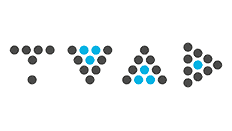Theorising Visual Art and Design (TVAD), School of Creative Arts
College Lane Campus, College Lane
AL10 9AB Hatfield
England
Since the 1960s we have seen numerous art-science experiments, often initiated by artists. Inter- and multi-disciplinary collaboration has never been a simple process. Some argue this is due to disciplinary boundaries emphasized in our educational system. For others, the issue is a lack of attention to real differences in thinking and approach. From the point of view of science, art is useful when it illustrates already established scientific theories. For many scientists, art provides a useful gateway to the general public, employing aesthetics to seduce audiences into engaging with scientific ideas. It seems that many scientists labour under the idea that art is simply the equivalent of beauty, despite the fact that for more than 100 years, and at least since Dada, artists have challenged this idea.
Questions this conference asks include, what is the best that art-science collaborations can offer?
What can be achieved by artists working with scientists that cannot be achieved by artists alone, or scientists alone?
On the one hand, we ask what can scientists learn from artists?
On the other, is it the role of art to illustrate important scientific truths, such as, climate science?
In other words, what is the point of sci-art collaboration?
We welcome proposals for 20 minute papers from artists who collaborate with scientists, and from artists who work with scientific ideas. We would also like to hear from scientists who work with artists. If you’re a historian or a philosopher interested in this area, this conference is also for you.
Deadline: April 17, 2020
Please send your proposals to Alana Jelinek, a.jelinek [at] herts.ac.uk, including a title and abstract of 250 words max and a short bio
Keynote speakers: Artist, Fiona Curran (PhD) Royal College of the Arts, London, UK / Curator, Science Museum, London, UK, Dr Katy Barrett (PhD)


